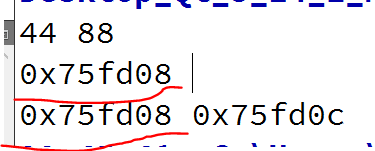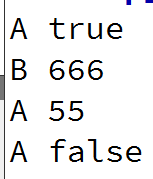1、派生一个类没有多余的内存开销,所需的内存就是储存成员的内存。
2、派生类一般将基类部分的数据放在前面:

#define debug qDebug()<<
class A
{
public:
int a;
};
class B : public A
{
public:
int b;
};
int main(int argc, char *argv[])
{
B bb;
bb.a = 666;
bb.b = 888;
debug &bb <<endl<<&bb.a <<&bb.b;
}
所以基类的指针(指针的值即地址值)可以指向派生类的地址,因为根本就是同一个地址值。
3、基类的指针和引用可以指向派生类对象:
A & r = bb;
A * p = &bb;4、派生类可以访问基类的保护和公有类型的成员,不能访问私有成员。(最方便的方法是基类中只有公有成员)
5、可以通过引用/指针调用基类中的函数:
class A
{
public:
int a;
void debugValue(int i)
{
debug "A"<<i;
}
void debugValue(bool b)
{
debug "A"<<b;
}
};
class B : public A
{
public:
int b;
void debugValue(QString str)
{
debug "B"<<str;
}
void debugValue(int i)
{
debug "B"<<i;
}
};
int main(int argc, char *argv[])
{
B b;
b.debugValue("hello");
b.debugValue(666);
A & r = b;
r.debugValue(55);
r.debugValue(false);
}
7、在派生类中用::可以便捷访问基类中的成员:
#define debug qDebug()<<
class A
{
public:
int a = 999;
void debugValue()
{
debug "hello";
}
};
class B : public A
{
public:
int b = 888;
void debugValue()
{
A::a = 444;
debug A::a;
A::debugValue();
}
};





















 984
984











 被折叠的 条评论
为什么被折叠?
被折叠的 条评论
为什么被折叠?








